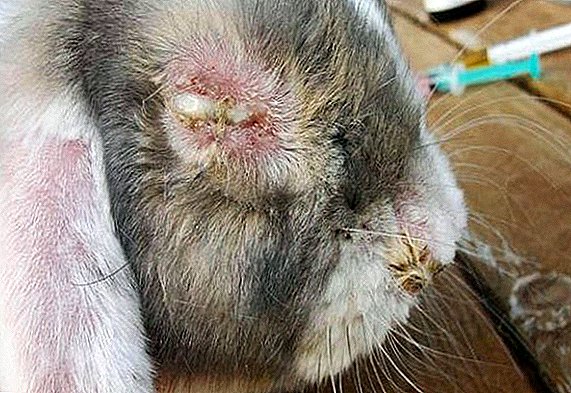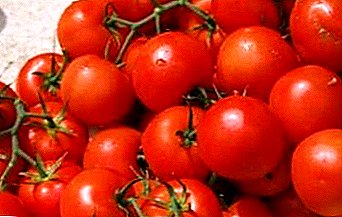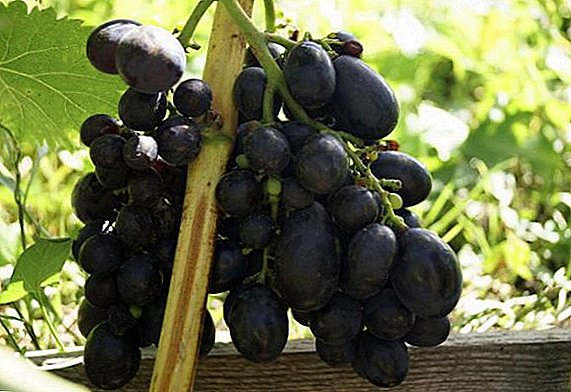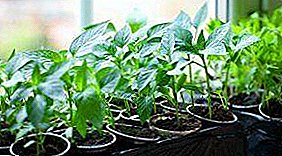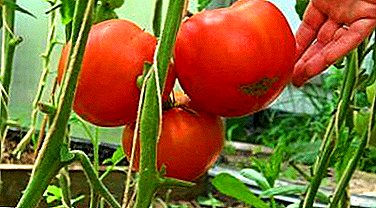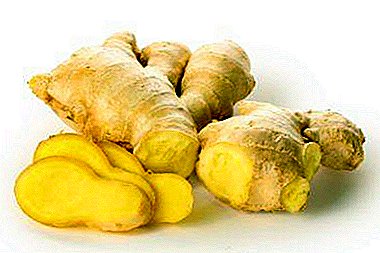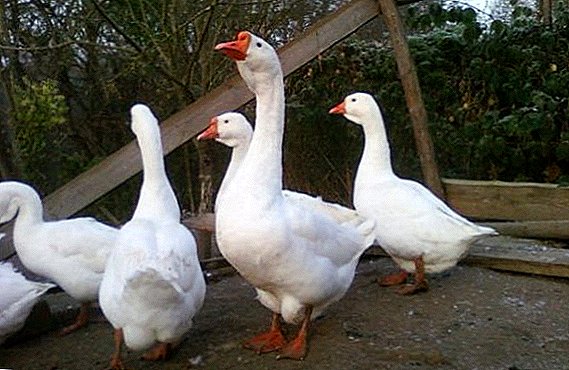 On the territory of Russia, the geese of the Linda breed occupy leading places in terms of popularity - about 40-50% of the poultry farmers prefer this particular breed of goose, and there are many reasons for that. It is economically and relatively easy to breed Linda geese, they show good productivity and high quality meat and egg products, as well as feathers. Today we learn how to keep this species of birds at home.
On the territory of Russia, the geese of the Linda breed occupy leading places in terms of popularity - about 40-50% of the poultry farmers prefer this particular breed of goose, and there are many reasons for that. It is economically and relatively easy to breed Linda geese, they show good productivity and high quality meat and egg products, as well as feathers. Today we learn how to keep this species of birds at home.
History reference
Officially, this breed was registered in 1994, but a few decades before this, Linda geese were in demand among domestic poultry farmers. Launched on base Gorky geese. To get the breed, breeders crossed several species of geese (Chinese, local and Adler). The result was a bird with excellent feather and down qualities, a quick set of muscle mass and precociousness, excellent endurance and a long life. 
Description and Features
Among the many breeds of geese, Lindus are distinguished by their beautiful appearance, impressive size and rapid weight gain.
Did you know? Some species of wild geese can fly at an altitude of 8 thousand km. For example, the mountain goose makes flights over the Himalayas and rises for this to an altitude of more than 10 thousand km! At this altitude, a person will not be able to survive without an oxygen mask, and also will suffer greatly from low temperature and hurricane wind.
External features
Lindovskaya geese have a beautiful, eye-catching appearance. They belong to the meat species of geese, because they have a corresponding exterior.
The main features of the exterior:
- head: torso proportional, massive and strong;
- beak: red-orange color, large size, strong, a lump is formed at the top at the junction with the head;
- eyes: small in size, dark;
- neck: thick, long;
- torso: massive, muscular, strong, elongated;
- chest: wide and deep;
- back: wide, horizontally set;
- tail: small size, low planted;
- legs: thick, set on wide, dark orange skin;
- plumage: dense, white with tan beige tint, gray blotches on the back and under the wings are also allowed; fluff is very thick, highly valued, grows seasonally.

The nature and instinct of brooding
From the parent breeds Lindovsky geese got good character: they are friendly and get along well with other representatives of birds, but at the same time they are distinguished by curiosity and sociability, high activity and mobility. Representatives of this breed are not averse to rustling and running. Ganders can show aggression in the event of encroachment on their females, as well as occasionally they can fight.
The breeding instinct of this breed almost completely absent: females can either not sit on the eggs at all, or they can stop incubating in the process. However, according to some poultry farmers, Linda geese, by contrast, are excellent chickens and caring mothers for newborns. In any case, incubation is the main way of breeding offspring.
Important! Linda geese have good genetics, so they almost never encounter genetic abnormalities, and the survival of offspring reaches 90%.
Weight indicators
Gander weighs on average up to 7-8 kg, but some individuals can reach a figure of 12 kg in body weight. Adult geese are slightly smaller - their weight is in the range of 6-7 kg. We should also mention the taste and nutritional characteristics of meat. Carcasses of Linda geese have a uniform fat layer, the protein content reaches 21%, fat - 6-8%. Daily weight gain can reach 100 g. At 3 months of age, goslings gain up to 50% of their total weight. 
When they start to carry eggs and what egg production
Sexual maturity in Linda geese begins at the age of 7-8 months, and egg production begins at 8-12 months. During the season, geese lay an average of 50 eggs in the first year, and in the following years, productivity increases. The weight of one egg is about 100 g at the beginning of the productive stage, 150-170 g in adult females. Egg laying at seasonal geese starts from February and lasts until the end of June.
Find out when geese start to fly, and what are useful and how goose eggs are prepared.
Conditions of detention
To obtain high-quality meat and egg products geese need to organize optimal conditions of detention. The room for keeping poultry should be spacious (1 sq. M. Per 1 specimen), clean, not damp. It must be equipped with drinkers, feeders and nests. The number of nests is determined from the calculation: 1 nest on 4 females. The temperature in the house can be around 10 ° C. This breed of geese perfectly adapts to the cold, because this temperature will not adversely affect the health and condition of the population.
It is necessary to place the litter on the floor with a layer of 5-10 cm; straw, peat, sunflower husk can be used as a filler. Duration of daylight for normal egg-laying should be at least 12 hours. The geese of the Linda breed necessarily need a territory for walking (in summer they can even spend the night there) and access to the reservoir. 
Feeding ration
It is also important to take care of a proper diet, because only this way you can get a healthy, strong bird with high productivity. The diet of Linda geese differs not only for different ages, but also for different seasons of the year.
Read also about geese breeds: the largest; Toulouse, Arzamas, Danish legart, Rhen, Kholmogory, Tula, large gray.
Young
In the first days of life, the ration of goslings consists of chopped boiled yolks diluted with boiled water. On the fifth day, you can replace the yolks with cottage cheese and add chopped greens (onions, meadow herbs). Also, chicks respond well to soaked bread crusts. Unlike most goose, linda chicks poorly digest the greens in large quantities, so you should not overdo it.
At the age of 10 days, chicks can eat corn porridge, boiled potatoes. By 3 weeks of age, the diet is replenished with raw chopped vegetables and root vegetables. At the age of 3 weeks, goslings can gradually switch to pasture.
Important! An abrupt change in diet can lead to obesity or dystrophy of the herd. Therefore, it is necessary to introduce new feed gradually not only to young animals, but also to adults. The amount of new feed should not be more than 15% of all food.
Adults
During the summer period, if geese freely walk on the lawns and have access to a reservoir, they can stay on the pasture all day. In the evening, they need to feed the feed (150 g per 1 individual). If they do not have access to water and the ability to obtain animal feed, it is necessary to introduce fish or meat-and-bone meal, to arrange containers filled with chalk and shell rock in the territory of the tank.  In winter, the diet consists of grains, grated root crops (potatoes, pumpkin, beets, carrots), cooked table peels, hay rot, or herbs.
In winter, the diet consists of grains, grated root crops (potatoes, pumpkin, beets, carrots), cooked table peels, hay rot, or herbs.
Geese should always have access to clean, fresh water. In winter, they can drink less, because they use snow to satisfy their thirst, but the drinkers should always be filled with water.
Tips for poultry farmers: how to determine the sex of geese, slaughter and cut the goose.
Pros and cons of breed
The advantages of this breed are many, including:
- rapid weight gain (continues even after molting and the formation of a permanent feather);
- high taste and nutritional characteristics of meat that are not lost even with prolonged freezing;
- with a special diet, the liver is suitable for preparing a special foie gras dish;
- good tolerance of frosts, heat and any climatic conditions;
- high quality fluff;
- high survival of offspring, strong immunity;
- relatively good productivity indicators;
- peaceful temperament.
 However, it is important to remember that in practice all the advantages of the breed can be assessed only by ensuring optimal conditions for the birds.
However, it is important to remember that in practice all the advantages of the breed can be assessed only by ensuring optimal conditions for the birds.
It is interesting to read about the benefits and culinary use of goose meat and fat.
The main disadvantages of the breed:
- lack of instinct incubation;
- noisy behavior of birds;
- propensity to avitaminosis, especially in the spring period with a poor diet and no walking, access to water;
- the need for extensive walking space and access to a water body.
Did you know? Geese fly a wedge to save their energy. During the flight, the leader of the pack creates an air stream that is picked up by the rest of the group. For better tuning to the air currents, the birds synchronize the movements of the wings. This pattern is used by pilots: it is known that if a group of aircraft is located a wedge, each of them uses less fuel.
Video: content gendovskih geese
Reviews of poultry farmers about geese Linda




At observance of all norms of the content, the profitability of breeding the breed can reach 100-200%. The breed is perfect for breeding on a large scale in poultry farms, as well as for keeping it in small quantities in its yard, in order to be able to savor tasty and healthy meat. A huge number of advantages explains the high popularity of Linda geese among the poultry farmers.


